Are you looking for the right guide on the internet that will help you understand all the tricks and tips of Microsoft Excel? Well, if that's the case then you're surely at the right place.
Microsoft Excel is no doubt a widely used productivity software application for its flexibility. This spreadsheet program provides calculations and data graphing, among other functions. This makes it suitable for personal data organization, classwork, and business activities.

It’s advised to start with the fundamentals if you want to know more about using Excel. However, before you proceed, you should familiarize yourself first with a few Excel definitions below to avoid confusion.
Workbooks and Worksheets
A workbook is an Excel document or file.
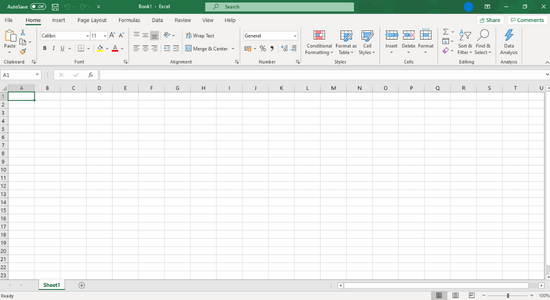
Every time you start Microsoft Excel, you have the option to start with a blank workbook or open an existing file.
Let's say you have created a new workbook. For this, you want to point your mouse cursor to the bottom part of the app window, and you will see a tab named Sheet1 by default.
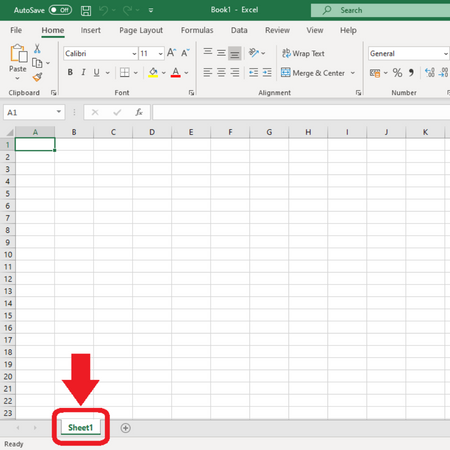
This one tab is what we call a worksheet.

In other versions of Excel, a new workbook contains three tabs below it.
Once you are ready, explore the basics of using this powerful software program in the following sections.
Starting Microsoft Excel
- Click on Windows Start > Excel.
 Alternatively, click on Search, type "excel" minus the double quotation marks, and press Enter.
Alternatively, click on Search, type "excel" minus the double quotation marks, and press Enter.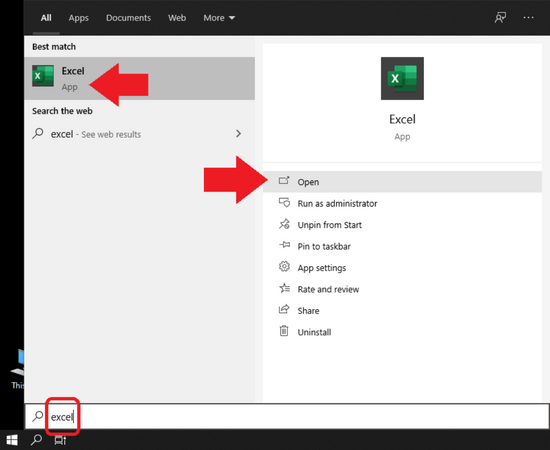
- Click on Blank Workbook.
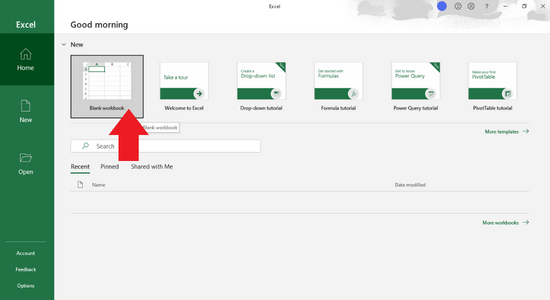 With your first Excel workbook ready, you should also get familiar with the Ribbon feature.
With your first Excel workbook ready, you should also get familiar with the Ribbon feature.
The Excel Ribbon
The Ribbon is a visible portion on the uppermost part of the app. Found in other Microsoft Office apps, this area provides quick access to many tools. Within the Ribbon, you will see different sections or groups for those resources, such as Insert, Page Layout, Formulas, and so on.
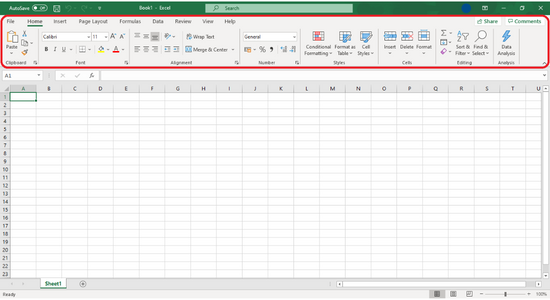
Now that you know the crucial aspects of Excel, it's time to perform the most commonly used functions and tools.
Adding Data
- To add data to your workbook, click on an empty cell and type something.
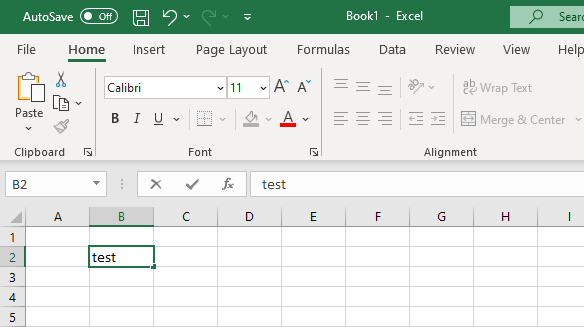
- Press the Enter key when you are finished.
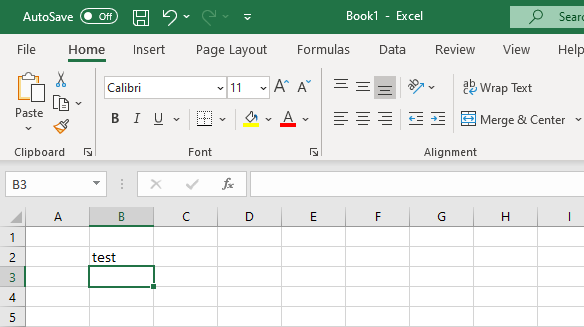
Once you hit Enter, the cursor will move to the below adjacent cell.
Additionally, you can move or duplicate that same data to a different cell using the cut-paste or copy-paste method, respectively.
To cut and paste the data, right-click on the cell containing that data, select Cut, right-click on another empty cell, and click on Paste.
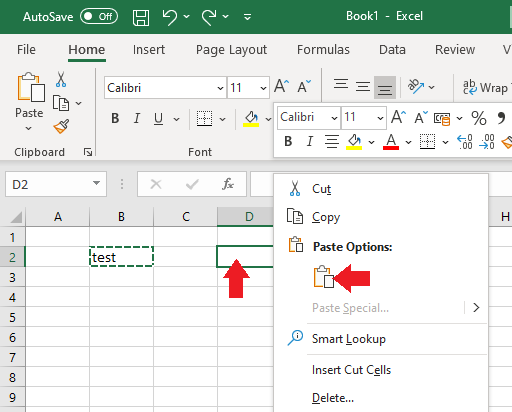
The above procedure is almost similar to copying and pasting data, except you must instead select Copy.

The other slight difference is that when you're about to paste that data via right-click, several Paste options will pop up.
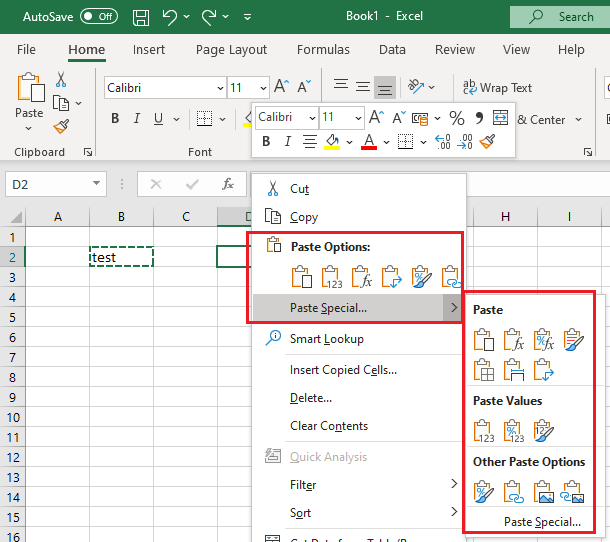
Formatting Data
It's best to display data in a presentable format in some cases so that your audience will know the underlying message you are conveying. For instance, in the context of a corporate presentation, you may want to add a dot followed by two decimal places to indicate market prices.
To apply a specific format to the data, right-click on that cell and select the "Format Cells..." option.

Then, the Format Cells dialog window will appear. This window lets you choose from multiple format options, such as Number, Currency, Date, Time, and more.
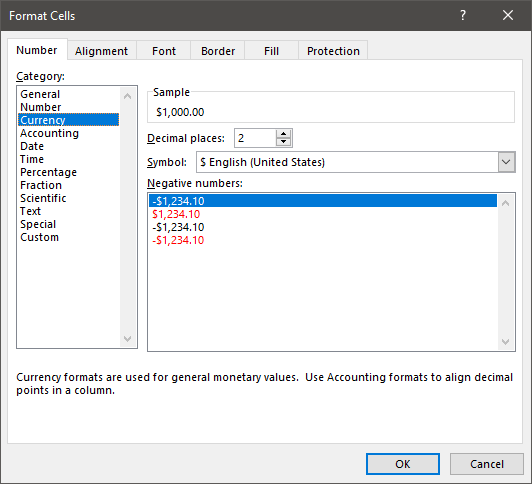
Referring to the above example, you can change the currency symbol or add more decimal places as you like. Click OK to apply the format.
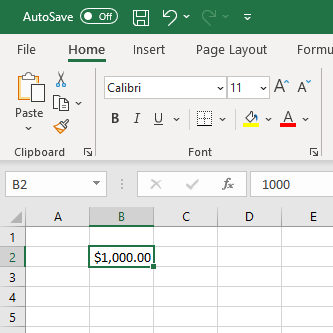
Using Formulas and Functions
You might also notice that whatever data you type in a cell, that same piece of information will show up on the Formula Bar, too.
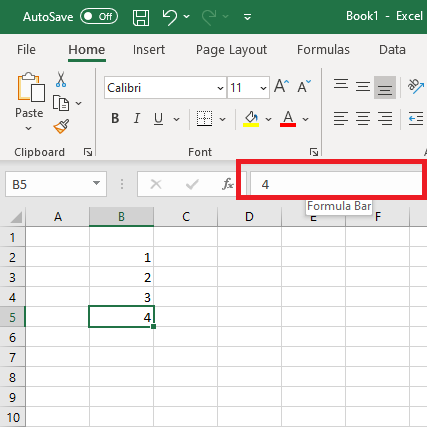
Use the Formula Bar (below the Ribbon area) for adding various functions, such as getting the sum of selected cells.
To obtain the sum of all numbers entered
- Click on Formulas.
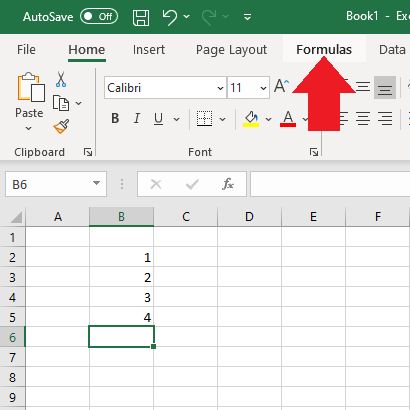
- While the Formulas group/section is selected, click Insert Function.
 A dialog window named Insert Function will show up.
A dialog window named Insert Function will show up.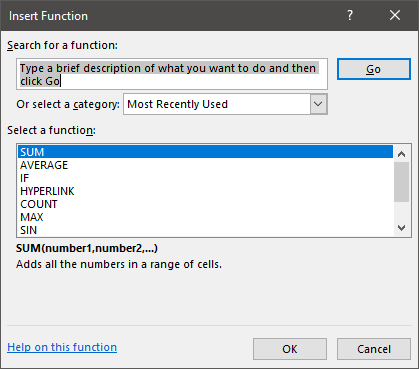
- Within the Insert Function window, click on the SUM function to select it and click OK.
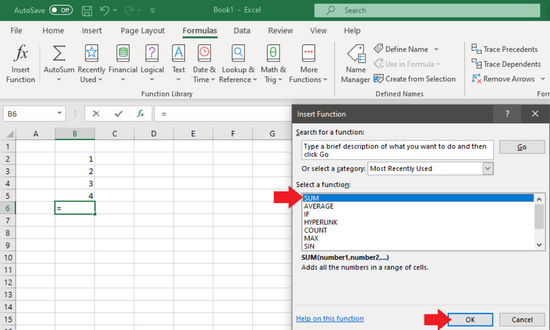 Another dialog window, Function Arguments, will pop up.
Another dialog window, Function Arguments, will pop up. - Inside the Function Arguments window, make sure that all numbers are selected. Check the Number1 entry field to inspect.
 Click OK to insert the addition function.
Click OK to insert the addition function.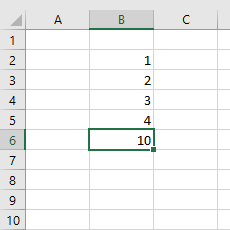
Summary: How to Use Microsoft Excel?
- You should first head over to the Microsoft Excel site and download a free trial version of the software. While you can use previous versions of Excel in a pinch, it is always best to use the newest version as it comes with more features and updates.
- The first thing you will want to do is familiarize yourself with the toolbar, located at the top of your screen. Here is where you have access to some essential tools that can help get you started.
- Speaking of toolbars, they are customizable so don’t be afraid to edit them to your preferences. You can do this by right clicking on each toolbar and selecting which commands you want to keep.
- A useful shortcut command is CTRL + Shift + Enter which allows you to auto-fill cells quickly. If you need to find an important command in a hurry, hit F1 and up pops a help menu.
- Like many other softwares, Excel also has a search function if you’re looking for something specific but don’t know where it might be hiding. To open this feature up, hit CTRL + F and enter whatever it is that you’re looking for in the search bar.
Conclusion
That’s basically it. Using the Excel is actually pretty straightforward. You just have to know the basics first.